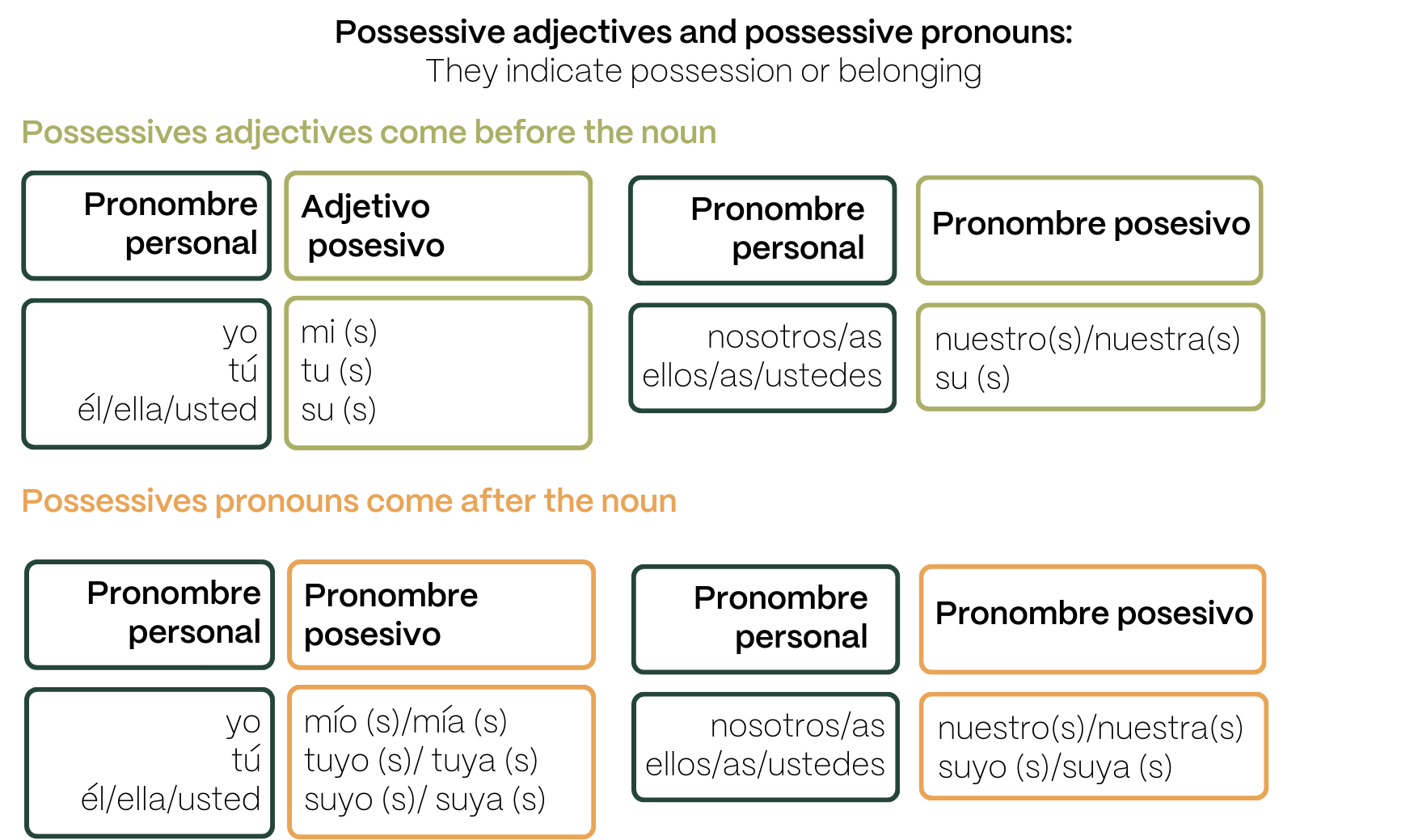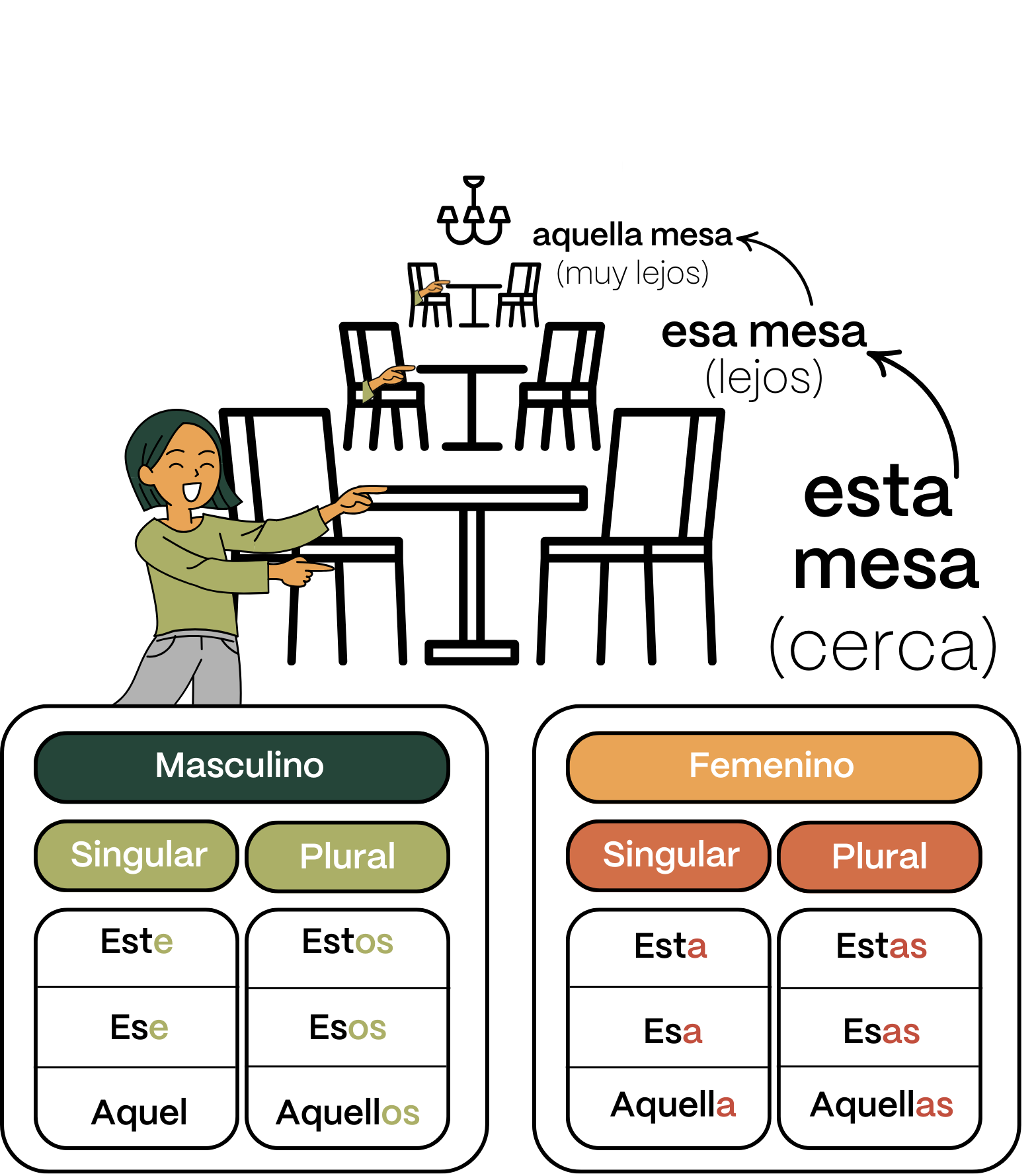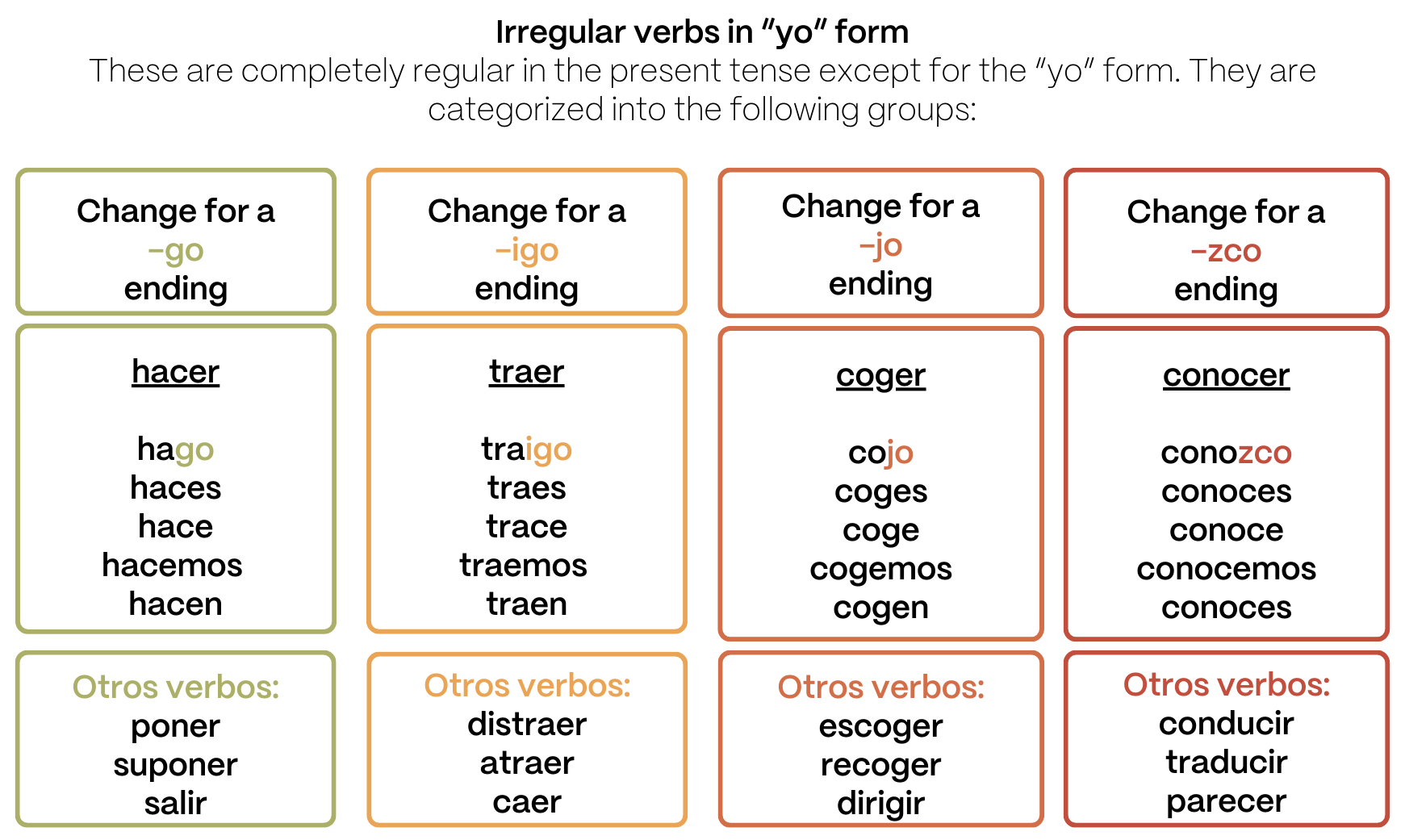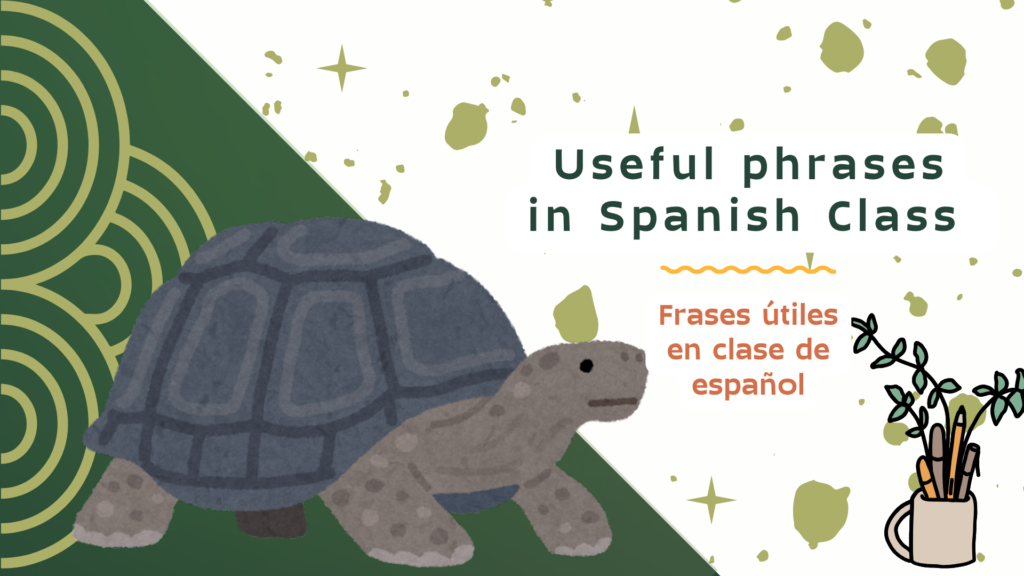
Let's learn and practice Spanish.
What you’re gonna learn in this post:
✔ Possessive adjectives and possessive pronouns
✔ Demonstratives
✔ Irregular verbs in “yo” form
Let’s get started!

Possessive adjectives and possessive pronouns in Spanish reflect:
- the grammatical person of the possessor (1st, 2nd or 3rd person singular or plural)
- the grammatical gender (masculine or feminine) and number (singular or plural) of the noun that is possessed
- masculine or feminine of possessive adjectives and possessive depends on the thing the grammatical person possess and not the possessor
Examples:
- Mi casa es bonita -> la casa mía es bonita (the thing I possess is feminine so: mía)
- Nuestra hija es inteligente -> la hija nuestra es inteligente (noun being possessed is feminine so: nuestra)
Demonstratives
They’re used to clarify what you are referring to: near or far from you (location or time)



That’s all. Are you ready to practice?

This work is licensed under Creative Commons Attribution-NonCommercial-NoDerivatives 4.0 International


